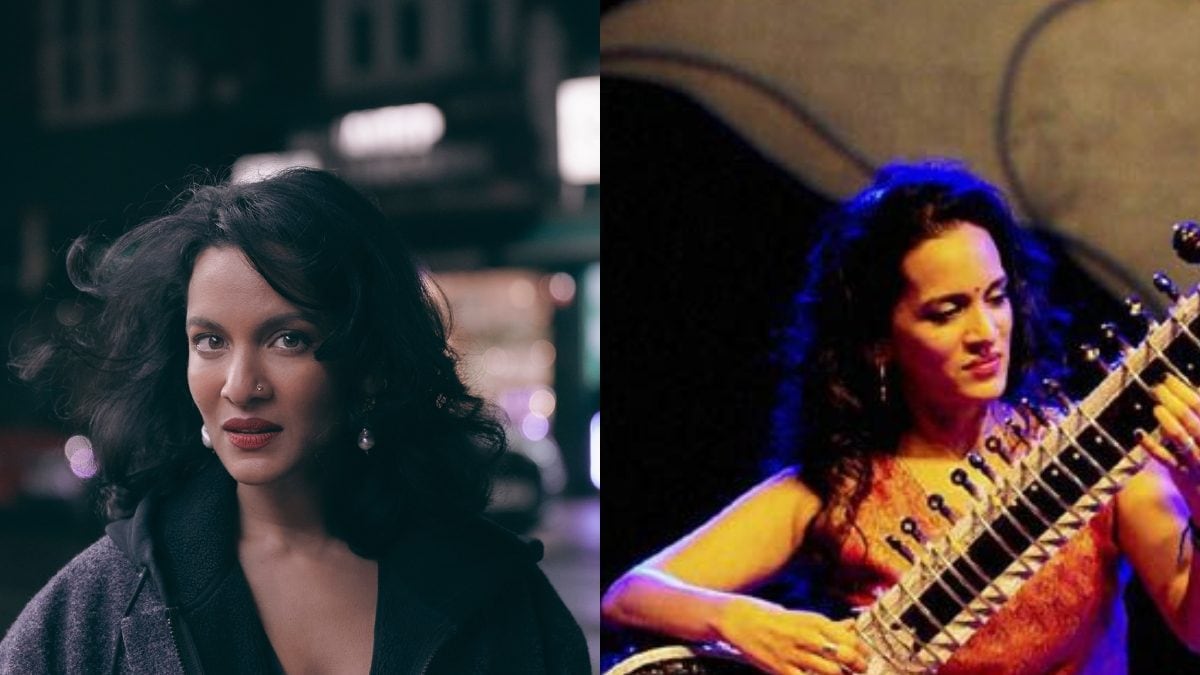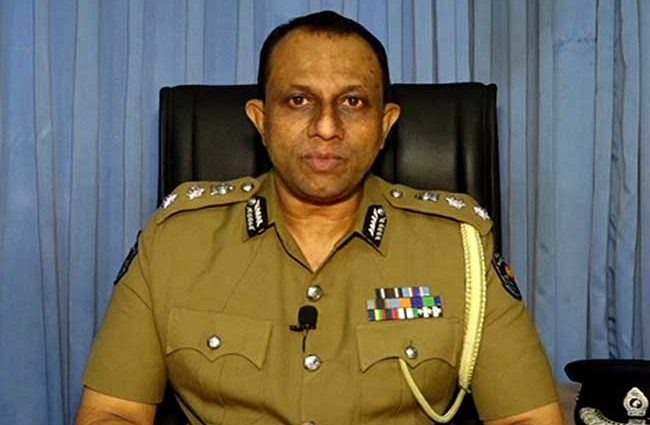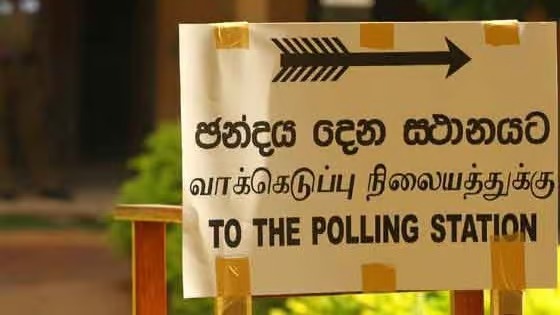Anoushka Shankar, a nine-time Grammy-nominated sitarist, producer, film composer, and passionate activist, was recently honored with an Honorary Degree from the University of Oxford on June 19. This prestigious recognition was bestowed upon her “in recognition of her outstanding achievements within the music industry,” highlighting her significant impact on the global music scene and her dedication to uniting cultures through her artistic endeavors. Notably, Anoushka becomes the first musician of Indian descent to receive this esteemed accolade, marking a significant milestone in her illustrious career.
Anoushka Shankar’s latest album, ‘Chapter II: How Dark it Is Before Dawn,’ has garnered praise from audiences worldwide. This mini-album was crafted during recording sessions with British producer and composer Peter Raeburn at his renowned Soundtree Studios. The recording process took place in two phases, first in May 2023 in LA, following Anoushka’s performance of her father Ravi’s Sitar Concerto No. 3 with the Los Angeles Chamber Orchestra, and then in London in September 2023 before embarking on her North American tour.
In ‘Chapter II,’ Anoushka ventures into new artistic and sonic territories, delving into a mesmerizing and almost ambient soundscape that builds upon the essence of the final track from Chapter I, ‘Sleeping Flowers (Awaken Every Spring).’ The journey within the album starts with the dreamy ‘Pacifica’ and progresses through four more expansive pieces, culminating in the captivating ‘New Dawn,’ inspired by the hypnotic style of Phillip Glass, marking the awakening from slumber.
Among the standout tracks, ‘Offering’ and ‘Below The Surface’ stand out with their ethereal melodies and evocative tones, while ‘What Dreams Are Made Of’ incorporates field recordings, blending Eastern influences with contemporary ambient Americana. Additionally, ‘In The End’ features poignant piano contributions from Danny Keane, enhancing the emotional depth of the composition and making it one of Anoushka’s most powerful recordings to date.
In an exclusive conversation with News18 Showsha, Anoushka opened up about receiving the Honorary degree, her latest album, her minimalistic approach towards Sitar and her recent albums and more.
Here are the excerpts:
Congratulations on being awarded an Honorary Degree from the University of Oxford! Can you share what this recognition means to you both personally and professionally?
I mean, it’s a huge honor. As you mentioned, I felt quite elated when I received the news. It was a huge surprise, and I wasn’t expecting it at all. Since it’s my first honorary degree, it’s an experience I’ve never had before. I was really honored and pleased. It was a wonderful moment.
You mentioned feeling grateful for the education in music you received from your father, Pt Ravi Shankar Ji, and the support from your mother. How did their guidance shape your career and musical journey?
As parents, they provided a supportive atmosphere that encouraged the arts, which is crucial for anyone starting a career early in the arts. On top of that, my father was also my guru, which added another layer of influence. Learning from a guru is a very intense and deep experience. It’s different from a formal education system because it’s more personal and involves a day-by-day transmission of knowledge. This kind of teaching is part of our musical legacy. Though I later moved on from the classical world and started making my own kinds of music, I’m always mindful that everything started with the seed planted by my father.
Your recent mini-album trilogy, with ‘Chapter I: Forever, For Now’ and ‘Chapter II: How Dark It Is Before Dawn,’ has been well-received. What inspired this project, and what can listeners expect from the final installment?
Absolutely. In chapter one of my current project, I was working with Arooj Aftab, and we recorded in Germany and Europe. Chapter two dives deeper into a theme of healing and was recorded in California, influenced by the feeling of the Pacific Ocean, which I grew up next to. Chapter three is heavily influenced by India and Goa. My love of Goa from my younger days is something I’m trying to capture in the music, bringing that energy into my work.
Chapter II encompasses a mix of ambient and almost mesmeric soundscapes while addressing the spiritual clichés sometimes associated with sitar music. How do you balance these elements while maintaining your unique musical identity?
For me, the only way to make art is to make it personal. If it’s authentic and real, then we can address big issues or tackle large themes effectively. On a mini-album of six songs, for instance, we explore the technicalities of my instrument and present it in a new sound world. We work on demystifying spirituality, removing the exotic tropes, and making peaceful and healing music. When art is personal and honest, people can relate to and identify with that emotional honesty because they connect with it themselves. That’s where it really reaches and resonates with the audience.
The track ‘Pacifica’ begins a night-time journey through your album. Can you share more about the themes and inspirations explored in this piece?
Chapter Two starts with ‘Pacifica,’ which has a very tender beginning. I was trying to evoke the Pacific Ocean and a sense of gentleness before diving into a deeper journey. The second song, ‘Offering’ and ‘What Dreams Are Made Of,’ explores a dreamscape, reflecting on feelings of time, regeneration, and healing. It examines what happens when we dream—how the body and mind regenerate. Over the last year, I’ve been contemplating the state of the world, the overwhelming events, wars, and the collective trauma we all feel. This song symbolizes the need to stop, take a pause, heal, and emerge on the other side. Finally, ‘New Dawn’ marks the end of this journey, just as the dawn hits the horizon, signaling the beginning of a new space.
You’ve drawn inspiration from various sources, including Philip Glass for the track ‘New Dawn’. How did his work influence this piece, and what other musical influences are present in this mini-album?
Over the past few years, I’ve been deeply influenced by western neoclassical music, particularly from electronic piano composers like Nils Frahm, a dear friend who worked on Chapter One. There is an interesting full-circle journey here, which is often overlooked. My father and other Indian classical musicians influenced mid-20th-century Western composers like Philip Glass and Terry Riley, who then created minimalism in Western classical music. Today, composers like Nils Frahm, Ólafur Arnalds, and Jóhann Jóhannsson make minimal, melody-based music. I believe the seeds of this style originate from Indian classical music. This influence has shaped my work significantly. I aim to create music with my sitar that reflects this minimal approach. In India, we often talk about fusion and crossover, but I’m interested in exploring neoclassical music—the next generation of our classical music and what the sitar can achieve today with modern technology.
The piece ‘What Dreams Are Made Of’ incorporates field recordings and has a chimeric quality. Can you discuss the process and thought behind integrating these elements into this track?
A lot of it involves thinking cinematically and emotionally. Playing minimally can be challenging because we’re trained to be soloists on stage, creating detailed, intricate stories with our lead instrument. Here, the approach is broader, focusing on the atmosphere you’re creating. It’s about letting the sitar drop in with a simple line and then drop out, contributing to the overall sphere of the music. In “What Dreams Were Made Of,” for example, I held myself back, playing less and allowing the music to be almost childlike. In songs like “Offering” and “Below the Surface,” which are created entirely with the sitar, I used technological effects to enhance its sound, like creating huge reverbs. Playing these songs live feels like immersing the audience in a bath of sitar echoes, which is very new and exciting to explore.
Megan Wyler, Raeburn’s partner, added vocals to ‘Pacifica’ and ‘New Dawn’. Can you talk about the role her contributions played in shaping the feel and texture of these tracks?
She is an incredibly skilled vocalist, known for her work on film soundtracks where she layers her voice in beautiful ways, almost like an instrument. Using vocals can be tricky because they naturally take the attention and tend to sit center stage. However, she was brilliant at helping me use her voice to create texture and background, blending it seamlessly with the sitar. Her ability to work in this way allowed us to create an intricate soundscape where the sitar could comfortably exist.
Your approach to recording with a “blank slate” and trusting the process is intriguing. Can you elaborate on how this method influenced the creative outcome of the mini-album?
My goal was to free myself from overthinking and agonizing, which often happens when making albums. I wanted to enjoy the pleasure and privilege of being in the studio, working intuitively and freely with others. Instead of meticulously planning a big album journey, I set a goal to embrace the journey as it unfolded. Working with different collaborators like Peter Raeburn, a film composer, on Chapter Two allowed for a more cinematic and atmospheric approach. Each chapter has provided a unique exploration of different aspects of my music.
Your shift to earthy ambience and deep textures with the 2005 album ‘Rise’ marked a significant turn in your career. What inspired this change in musical direction, and how did it shape your future works?
When I made Rise at 24, which came out at 25, I had already produced three classical albums. However, those earlier works didn’t fully represent who I was or how I felt as an artist. They reflected the music I had learned but not my complete identity. So, I took a pause to give myself the opportunity to make music without boundaries or limitations. This led to Rise, an album that incorporated electronic elements, flamenco piano, and instruments from around the world, reflecting the variety of music I grew up with. This blend of cultures, styles, and time periods felt like a more complete picture of who I am as an artist.
In your later works, you have integrated various genres and influences, from flamenco in ‘Traveller’ to addressing contemporary issues in ‘Land Of Gold’. How do you navigate and balance these diverse musical influences in your compositions?
It depends on the context. For my own albums, there might be a parameter I’ve set, or it might be very free. If I’m working on a classical project, the framework is very clear. It’s about creating a context for each project—deciding if the music needs to be open and expansive to tell a story or if it needs to adhere to certain parameters. It’s like choosing what language to speak based on who you’re talking to or where you are. This flexibility allows me to adapt and communicate effectively through my music.
Being recognized as an Asian Hero by TIME magazine and receiving the British House of Commons Shield are significant achievements. How do you view your role as a cultural ambassador and a trailblazer for Indian classical music?
I feel very fortunate to make music that comes from my heart. Many artists, even those who release music through a label, often face limitations. I’m lucky to have found a path where I can create the music I genuinely want to make and have an audience that resonates with it. What more can an artist hope for? My aim is to continue being as honest as possible in my music, responding to the world around me, and being a voice for positive change where I can. That’s my aspiration.
You’re celebrating your 30th year of performing live as a sitarist and have toured extensively across the globe. What have been some of the most memorable performances or venues during this tour?
The first shows are always the most scary and locked in, but also incredibly exciting. We’ve played at some incredible venues. In India, there’s been a beautiful tour, but Lollapalooza really stands out as something special. Being in Australia, performing at the Sydney Opera House, and in London at the Barbican with more than 100 friends in the audience—these shows are particularly memorable. These experiences are marked by the uniqueness of the venue, whether it’s a festival or an unusual location, or simply a home show filled with friends. Those are the ones that truly feel special.
How do you prepare for such an extensive global tour, and how do you keep your performances fresh and engaging for diverse audiences?
When touring, especially around a specific release, the context is often set by that theme. However, I try to leave enough room in each show for change and improvisation to keep things fresh. If you play the same repertoire repeatedly, it can start to feel mechanical. Allowing space for spontaneity helps maintain excitement for both the performers and the audience. I don’t change the music based on geographic culture; audiences are more complex than that. However, I may adjust how we present the music based on the setting. For example, at a large festival, we might start with something louder to grab attention, whereas, in a concert hall, we might take the risk of starting slow since the audience is already seated and attentive.
You’ve broadened your repertoire to include composing for visual media, such as the 1927 Indian silent film Shiraz and Mira Nair’s series A Suitable Boy. What drew you to composing for film and television, and how does this process differ from creating standalone music projects?
I love trying new things, especially within music and composition. While composing my own work is wonderful, there’s also the challenge and reward of composing for other projects. Collaborating within other mediums to achieve the desired outcome for a piece is something I’ve been really interested in. As a single parent, it’s sometimes challenging to manage touring. Composing for other projects allows me to be creative and busy while being able to spend more time at home. It’s a nice balance to develop into.
What are the unique aspects of translating historical and cultural themes into your film scores, especially for pieces like ‘Shiraz’ that have significant cultural weight?
Working on a film project was really interesting and a good fit because of my background in classical music, paired with the knowledge of how to modernize it. The challenge was to maintain the film’s age or prestige while presenting it to modern audiences. I relished the opportunity to bring out the best of classical elements in a contemporary context, and it was a wonderful experience. I’d love to do more of it.
You have been a vocal advocate for various social causes, including being an ambassador for The Walk and the inaugural president of the F-List. How do you balance your activism work with your musical career, and why is this work important to you?
It’s important to me to have a positive impact on the world, not just as a musician, but as a human being. Our choices in how we live and what we support can have a positive or negative impact. One way I can create a positive impact is by using my platform and voice effectively. Balancing this with my music comes down to authenticity. If I confuse my audience by speaking on too many issues or something disconnected from me, I’d lose their attention and the opportunity to make a difference. People who follow me know that I care about refugee rights, women’s causes, and children. Connecting these causes to my work, or doing separate initiatives aligned with these issues, aligns with who I am. I care about many other issues, but I choose not to focus on all of them publicly to avoid spreading myself too thin and losing effectiveness.
What aspirations do you have for your musical journey in the next decade, and how do you see your role evolving within the global music landscape?
It’s hard to predict the future, but my hope is to keep deepening my craft. I want to get better and go deeper into my music. With that growth, I aim to take on bigger, more beautiful, and interesting projects that I haven’t done before. I hope these endeavors will reach more people and resonate with them. However, the music industry and the world are changing so fast that it’s difficult to imagine what things will be like a decade from now. So, we just have to keep moving forward, doing our best, and see what happens.
You’ve had the unique opportunity to work with a diverse range of artists like Sting, M.I.A., Herbie Hancock, and Arooj Aftab. What have these collaborations taught you, and how have they impacted your music?
Collaborations are a significant area for learning because when you work with people who have different skill sets or experiences, they bring new perspectives to the table. Together, we can create something bigger and better than we could individually, and I also have the opportunity to learn from them. It’s also a lot of fun. If you have good chemistry with another artist, it’s like hanging out with a friend—you get to inspire each other and share ideas. It’s an incredible place of connection and creativity.
Looking ahead, what new projects or collaborations are you most excited about?
There are a few projects I’m really excited about, although I can’t share all the details yet. One involves work for ‘Chapter Three,’ and another is a side project with some iconic and amazing artists. I recently spent a week with these artists, and it was incredibly inspiring, but we’re still figuring out what we’re going to do with it. Another area I’m excited about is curation. I’m going to be a guest director for the Brighton Festival in the UK next year. It’s a one-month-long, cross-media arts festival, and I’ll have the opportunity to invite many artists across different mediums who inspire me. Right now, I’m in the process of putting it all together, designing it, and planning interesting collaborations and surprises for the audience. It’s a hugely inspiring endeavor.
What advice would you give to young musicians who wish to pursue a career blending classical traditions with modern influences?
It’s crucial to approach any musical style or culture with respect and understanding. Even if you don’t know the other style well, you can’t treat it casually or take it for granted. Educate yourself and seek help to ensure you’re not doing anything disrespectful. For example, someone working with me might not know they shouldn’t step over my instrument, and it’s important to learn those nuances if we’re going to collaborate. Similarly, I can’t be arrogant about another culture or style; I need to learn and approach it with curiosity and respect. Additionally, don’t engage in something just because it seems cool or might do well. There’s nothing wrong with that, but if you can connect your work with your genuine artistic voice, it’ll have the authenticity that people can hear and resonate with.


















 Views Today : 106
Views Today : 106 Views Yesterday : 111
Views Yesterday : 111